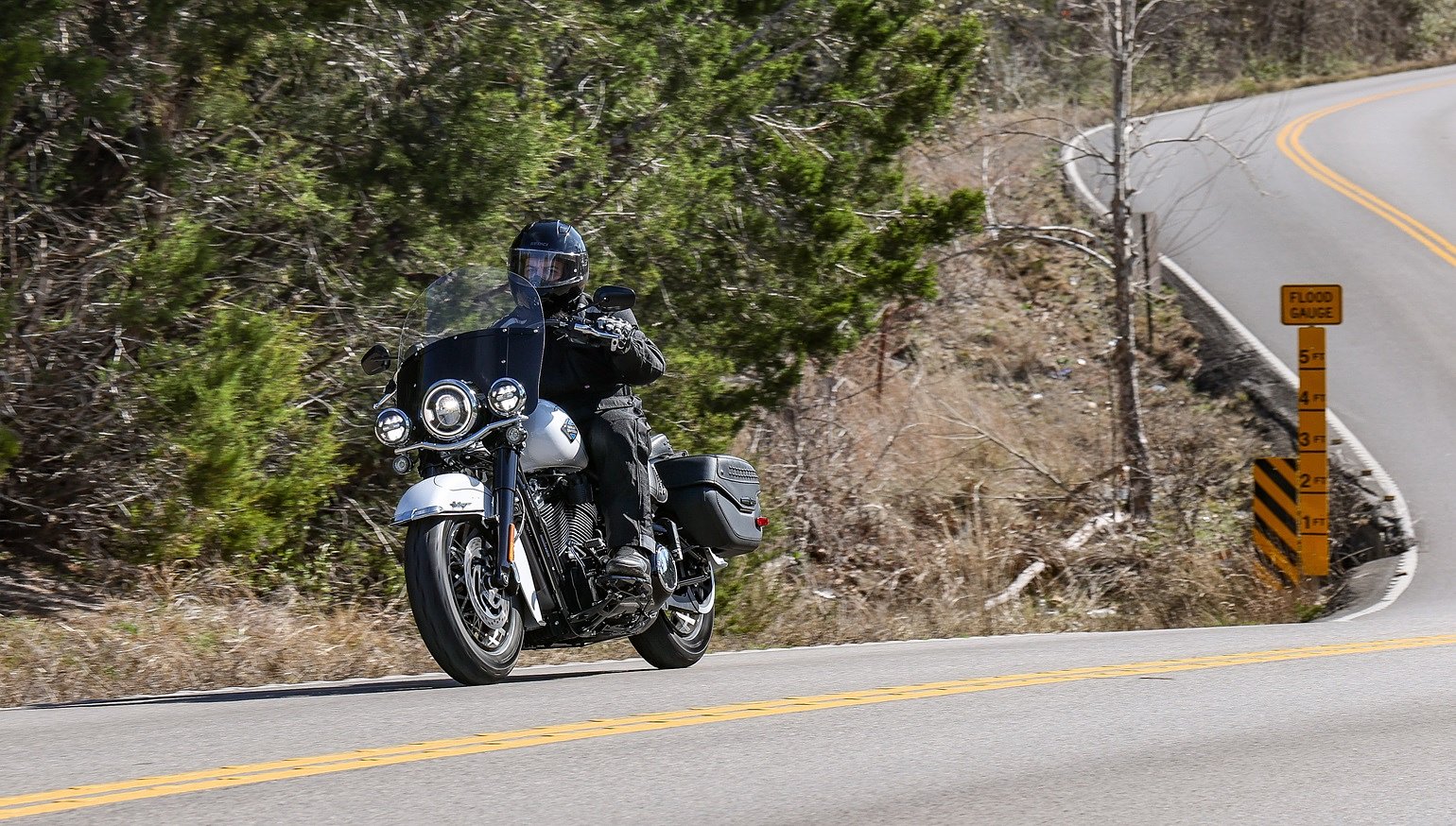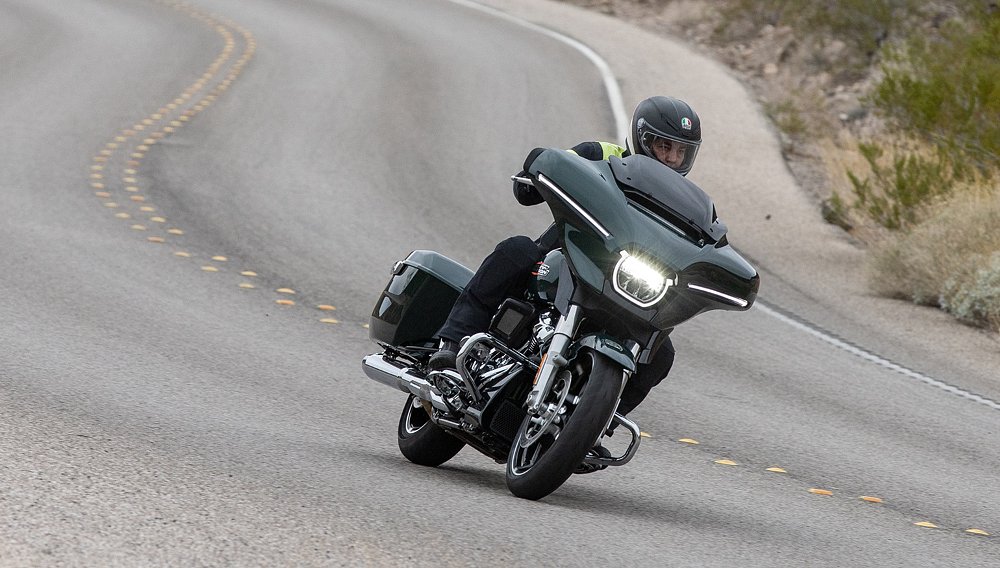It's been seven years since Common Tread last sent me to go ride and report on Harley's cruisers. When I slid into the saddles then, there was a lot that felt unfamiliar. Good, but very different. The previous Softail chassis with the 'tween-the-rails pull shocks was, from a riding perspective, not for me; I personally only ever owned ones that were being resold.
This time, the differences weren't as stark. The big progress they made when overhauling the Softail chassis has allowed the details they've concentrated on to feel thoughtful. I'm not going to get too buried in what it is to ride these, despite the fact I just put a few hundred miles on these motorcycles. The bulk of what I've written previously holds true today. Instead, the minor tweaks are what's worth talking about here, so I'm a-gonna.

But first, my usual disclaimer: Harley-Davidson bought me two real nice suppers, a half-dozen gallons of gas, a couple of plane tickets, and a hotel room at a pretty swanky joint. With that out of the way, a bit about the line in general. Because I rode six different machines, I can't really delve deeply into each model, and because we're not looking at a total revamp here, I don't think I’d be helping anyone by doing that except those wholly unfamiliar with this chunk of their lineup. So if that's you and you're considering one of these… uh, I guess read this piece after you've gotten your bearings.
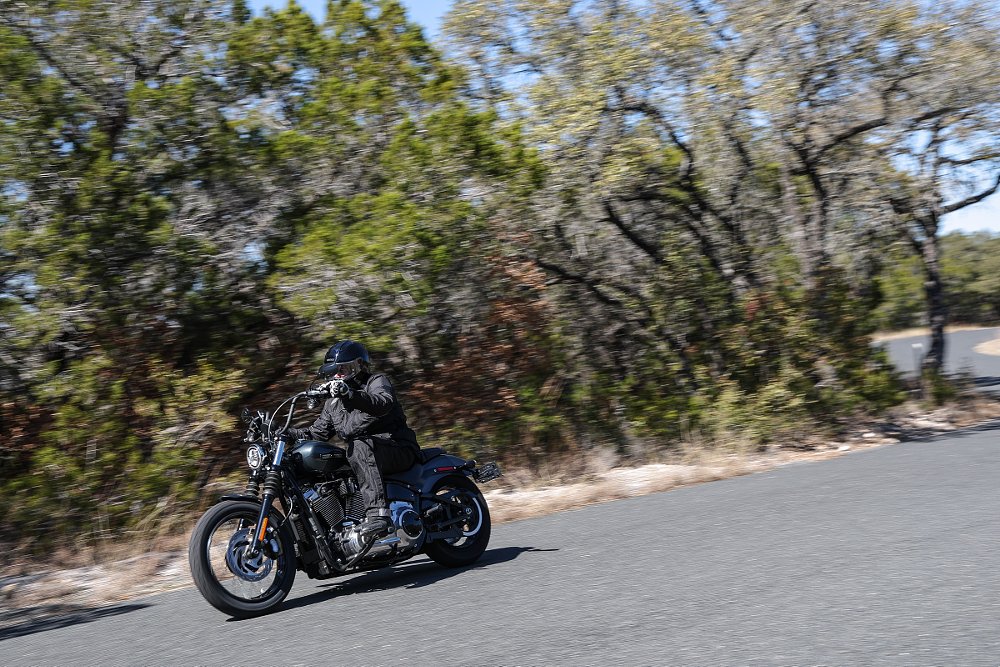
The Softails
The Softail Standard and Fat Bob have been dropped from the line for '25, making the current Cruiser models the Heritage, Street Bob, Fat Boy, Breakout, Low Rider S, and Low Rider ST. They exist on a spectrum in the order I listed 'em in terms of appearance from traditional to modern. You got your classics (the first two), your dad bikes (the middle two) and your club bikes (which are rapidly becoming dad bikes). I am pigeonholing affectionately here; I'm an over-the-hill rider myownself.
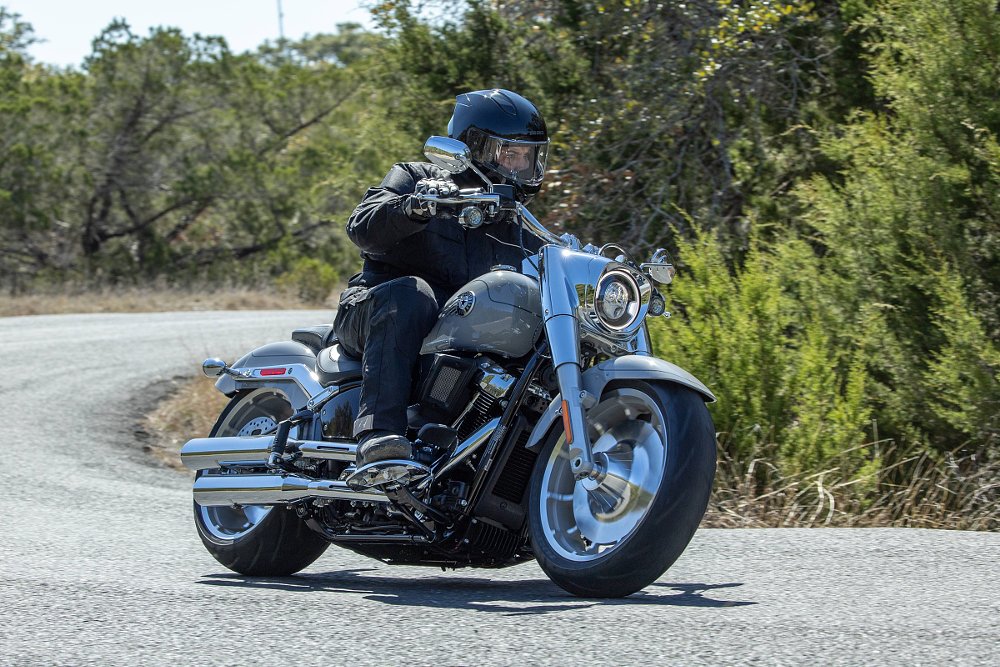
All the bikes now have selectable ride modes. (Rain, Road, and Sport. This is pretty industry-standard, so I'll spare you the description.) They all also have cornering ABS, cornering traction control, tire-pressure monitoring, and "Cornering Enhanced Drag-Torque Slip Control," which is a fancy way of saying "traction control works when the throttle is snapped shut, too!" Don't blame Harley; this is how almost the whole industry does it, silly though it is.
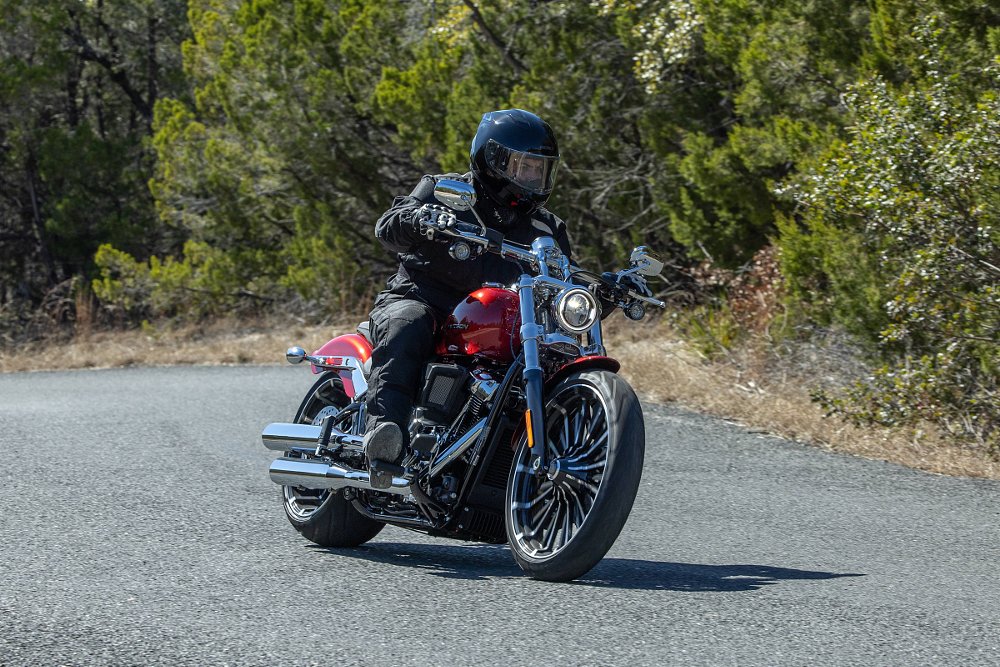
Before we go any further, I want to point out right now that these bikes, similar though they may seem, are surprisingly different. There's more heterogeneity in these six bikes than I would ever have guessed. If you are considering a Softail, please do me a personal favor and set aside a whole afternoon for test rides. What you think you want might not be at all suitable. If you ride a Low Rider S and then a Heritage and a Fat Boy after that and come away thinking the experience was similar, I will be floored. I could not get over how the engineers and designers managed to extract such different rides out of this platform. It's a testament to how much effort was clearly put into these bikes.
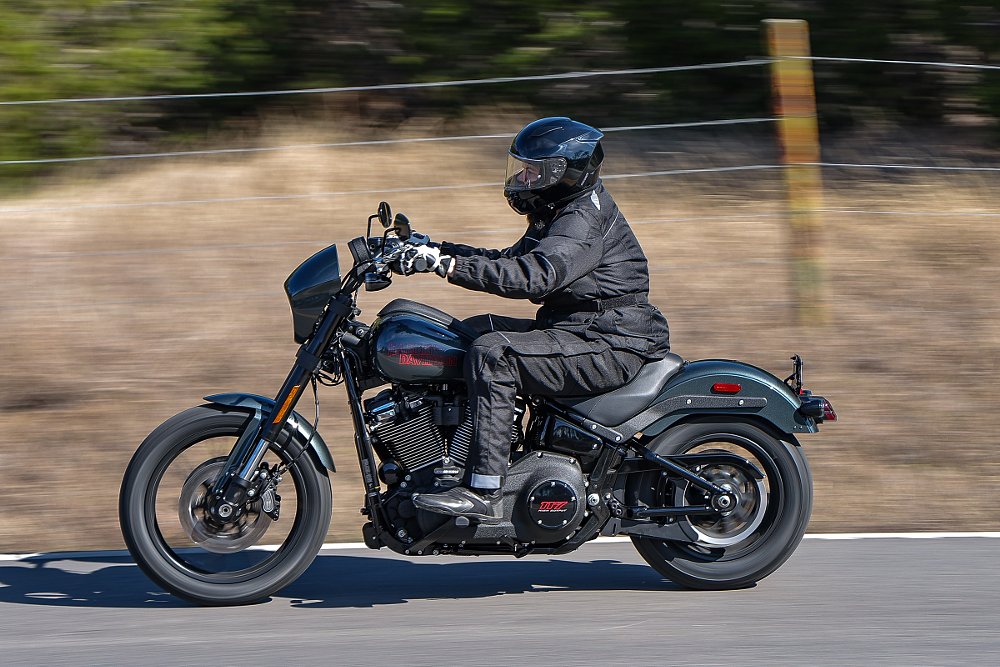
Suspension
The suspension on these motorcycles has been reworked in a way you may consider minor or major. (I'm in the latter camp.) There are no longer progressive springs in these bikes! The MoCo went straight-rate across the board. I prefer straight-rates when building forks and shocks and many big-name suspension tuners sing a similar song. I didn't do so much as adjust sag on these bikes; I just hopped on and burned. The suspensions ranged from "quite good" to "don’t touch that; this is just fine for me, thanks."
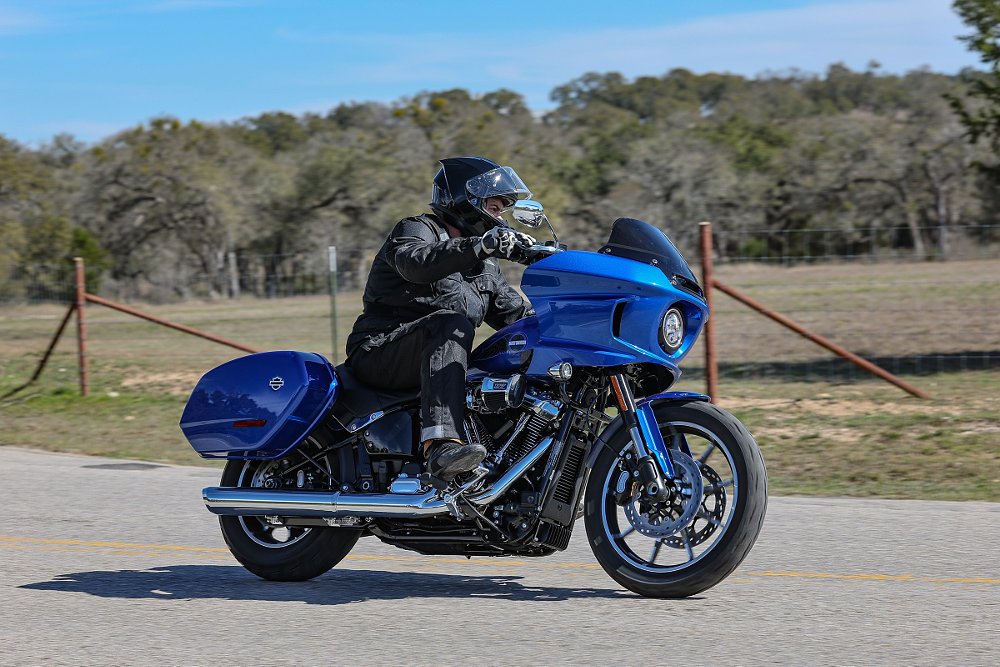
What I cannot tell you about is how it compares to the progressive stuff. Sure, I rode both. However, I'm more than 100 pounds lighter than I was when I wrote that story seven years ago. I can tell you this current suspension is great, but I can't measure the rate of change accurately. There's plenty of travel and the damping characteristics are well matched to each style of bike. Heritage is nice and supple, and the Low Rider twins are taut and responsive.
Engine
During our pre-ride briefing, we didn't spend loads of time on the engine, but I think there's a little going on there. All bikes are equipped with a 117-inch engine, though it's not the same throughout. Harley has a lot of flavors of the same basic Big Twin right now. All of these Softails share the same cylinder heads as the Touring models. Unlike the Tourers, all the Softies run oil (only) through the heads and carry it into a little radiator to shed heat. The rad is really nicely integrated into the frames — most casual observers won't even notice they're not air-cooled-only.
These new-to-Cruisers heads have what I would call sort of a modified bathtub combustion chamber (four valves makes it more of a Jacuzzi) and ovalized intake ports. The new aluminum intake also has oval ports to match.
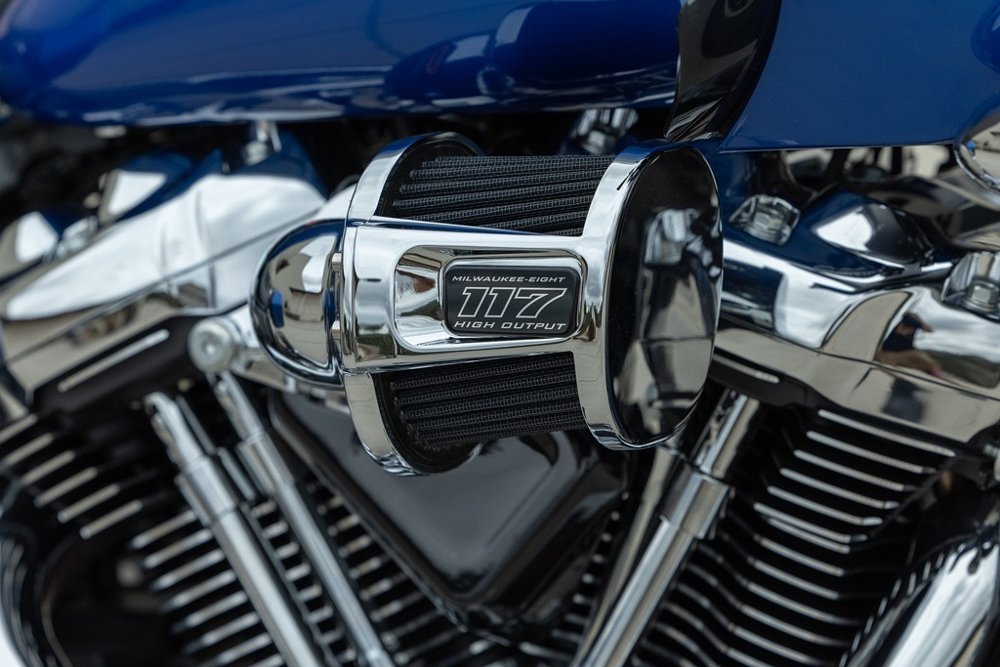
None of the engines found in the Softails have variable valve timing (VVT). (Warning: Conjecture ahead! It runs through the end of this paragraph.) But given the shape of the cam covers, it sure looks like they're allowing for it in the near future. Since these are only single-cammers, the benefits of phasing are sort of limited in the performance realm. It's highly likely VVT will be employed for curtailing emissions.
Harley-D says they have three flavors of this engine: Classic, Custom, and High Output. They range in performance. For horsepower/torque figures, you've got 98/120, 104/126, and 114/128 in the order the engines are listed. The differences H-D reps highlighted in our briefing were cam, exhaust, and airbox.
That said, there must also be vastly different tunes and integration of the rider aids both engine- and even model-specific. Please don't think that if you are purchasing a model with an engine at the "lower end" of the spectrum you're being shortchanged. The torque is especially buttery and smooth on the Heritage, for example, and the relaxed tempo of the engine encouraged some mellow riding that didn't require lots of gearbox work as I traversed the meandering roads of Texas. Think of them as different powerplant arrangements, not a "good/better/best" spectrum.
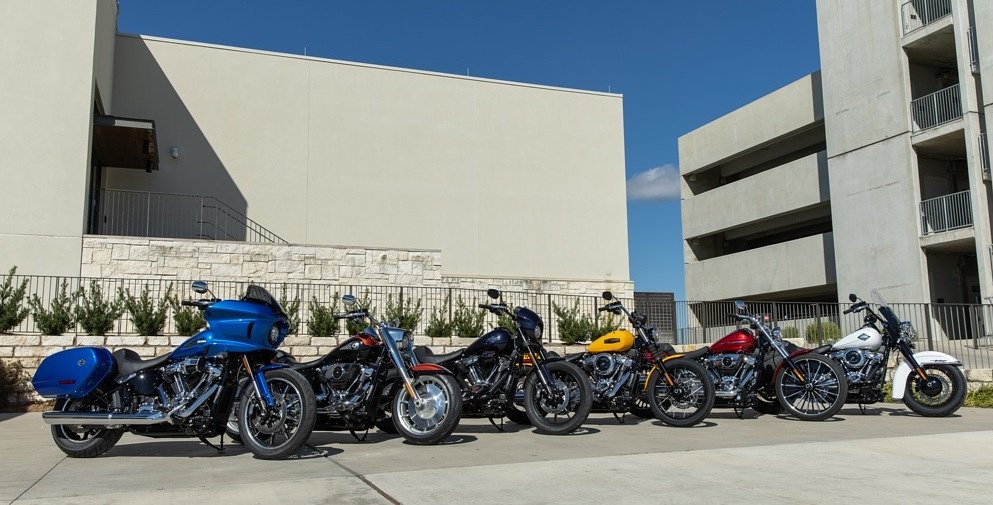
I might even go so far as to say if you're an old fart like me and you like to do the "put-it-in-one-gear-and-see-the-sights" type of ride, the Classic is actually the best mill suited to it. Now at the opposite end of the spectrum? LRS and LRST have the same HO engine, and they have a higher redline, due in part to a cam out of the CVO RGST. (How 'bout the weather? It's like alphabet soup in here!) They are cammy. I enjoy that type of riding on the right type of bike. I've personally stuck together a few engines and bikes that are similar to the S and ST, and I had to spend a lot of money and time to get there. These bikes reward (demand?) aggressive riding, so if you are considering one, make sure you put it through its paces, but don't forget to lug it around, too.
Little stuff in no particular order
Air cleaner: The engine variants are easily identified by the air cleaners. The Classic engine (round air cleaner) goes in the classic bikes (duh). The Ventilator (Hypercharger-looking trapezoid thing) goes in the bikes you'd expect, the Fat Boy and Breakout, and the performance bikes (Low Rider S and ST) get the Heavy Breather intake, which reminds me a lot of the long custom intakes that had to be whipped up when hot-rodders of yesteryear would stick a Weber or SU carby way out in the breeze to clear the tanks.

On the upside, that long intake on the Heavy Breather helps generate torque. Harleys all have perilously short intake tracts due to the packaging of a V-twin engine relative to the rider's legs and the Heavy Breather mitigates that.
The downside is the weather protection. I have long maintained that if you ride your motorcycle in all weather, the factory airboxes (dog dishes, ham cans, footballs — the big ugly ones everyone brings to the swap meet) outperform everything in the rain. The old standby — the S&S teardrop — is a close second.
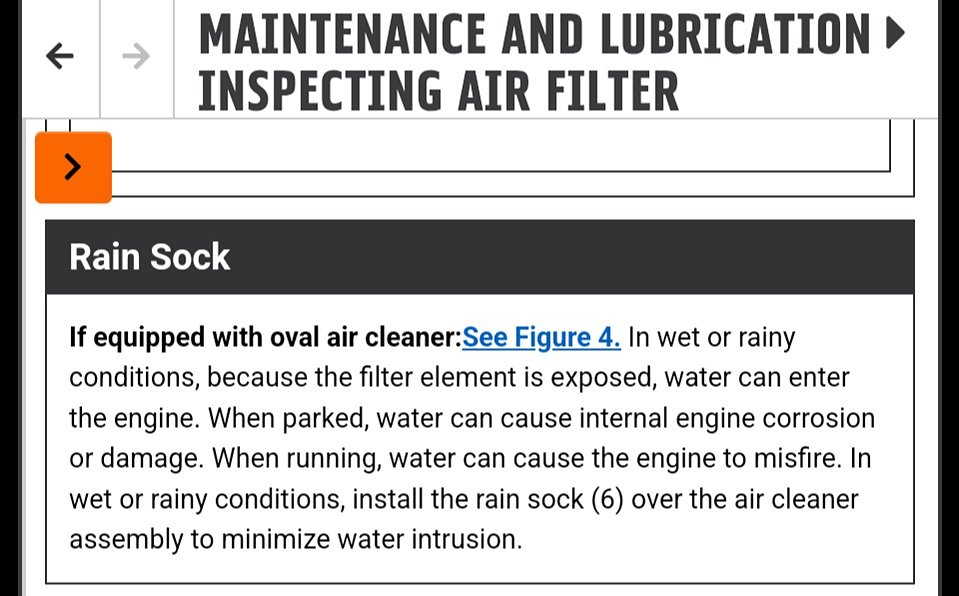
But everything with an exposed element like this Heavy Breather? I don't think the mild performance increase is worth the constant element oiling, the pulling over under overpasses during sprinkles, and the requisite carrying of stupid air cleaner condoms. I'd buy an S or ST, sure. But I'd be looking to scoop a takeoff Heritage air cleaner the first chance I got. Some of you in arid areas may disagree with this take.
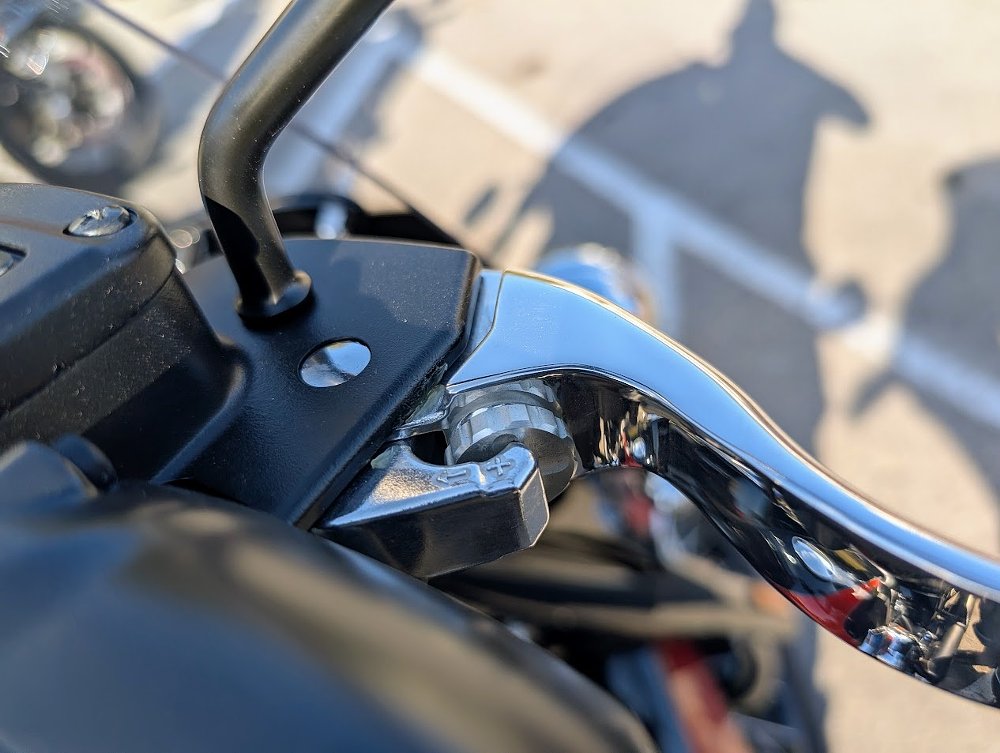
Controls: All models now feature a standard reach-adjustable brake lever. A+! A little side note: I am a sucker for Easter eggs. They're all the rage in the automotive world, but they show up in motorcycling, too. I would call the waffle grips on these bikes a very subtle EE; they're a throwback to the Panhead days. They're an obvious homage if you know your way around that old crap, but many people will miss this sweet deet. Just trust me when I tell you the Design department surely took a field trip through the museum before conjuring them.
Switchgear: The need for physical buttons for the ride modes heralded a redesign of the turn signal buttons, which are now double latching pushbutton rocker switches, not the "standard" single soft switches that have been in use for many years. Familiar and new all at the same time, the rockers feature a pivot point at an uneven split, biased to the half you'll be using more often (the signals). At the suggestion of one of the engineers, I began lifting the long side of the switch with my thumb rather than stabbing the short side of the rocker for mode changes or horn actuation.
It's an excellent layout; it's immediately familiar and intuitive. The control clamshells appear uncluttered and do not require a manual to use or understand. To me, simplicity is always a hallmark of great design and engineering. This switchgear is simple. Clearly thought went into this.
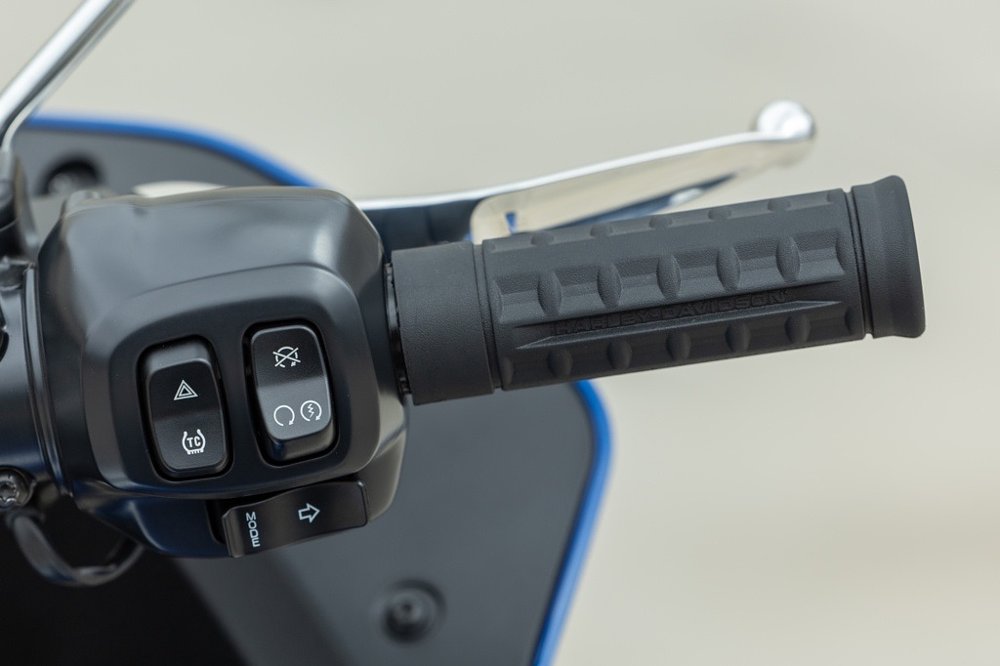
Some of the switches are small (cruise control, for instance) and while muscle memory might get ingrained over time, I had to take my eyes off the road to perform some actions. I think this is par for the course with all vehicles now, cars included. Switches are not backlit, which is a good way to cut cost out of these bikes — the target rider is probably not spending lots of time on the bike at night.
Lighting: Every lamp on the motorcycle is LED now; the lone holdouts were the incandescent turn signals on a few models. The designers knocked this out of the park. I thought it was a nice touch to switch to homogeneous-element surrounds. This is the super-premium look that fluorescent lights were previously used to achieve; it's when no diode itself is discernible because there's a diffusing lens shielding the light's diodes. The photo tells the story better than I can with all these words.
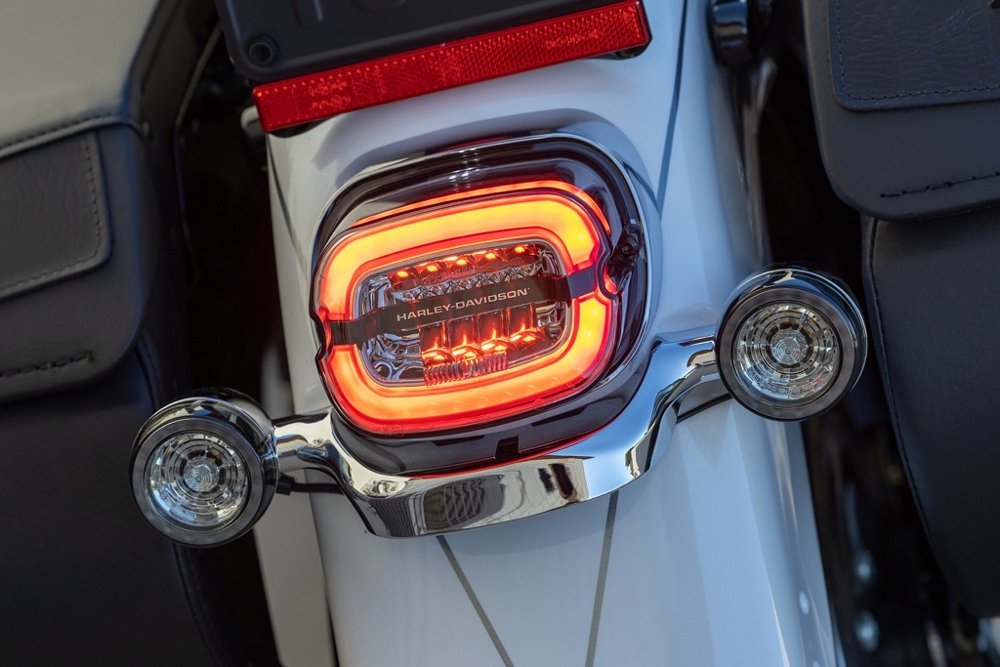
In my estimation the aftermarket is dead in the water in this department. Riders replacing any of these lights will do so because they wanna play dress-up, not for improved function. They're gorgeous, draw little power, and will probably last halfway to forever assuming they stay sealed from the weather.
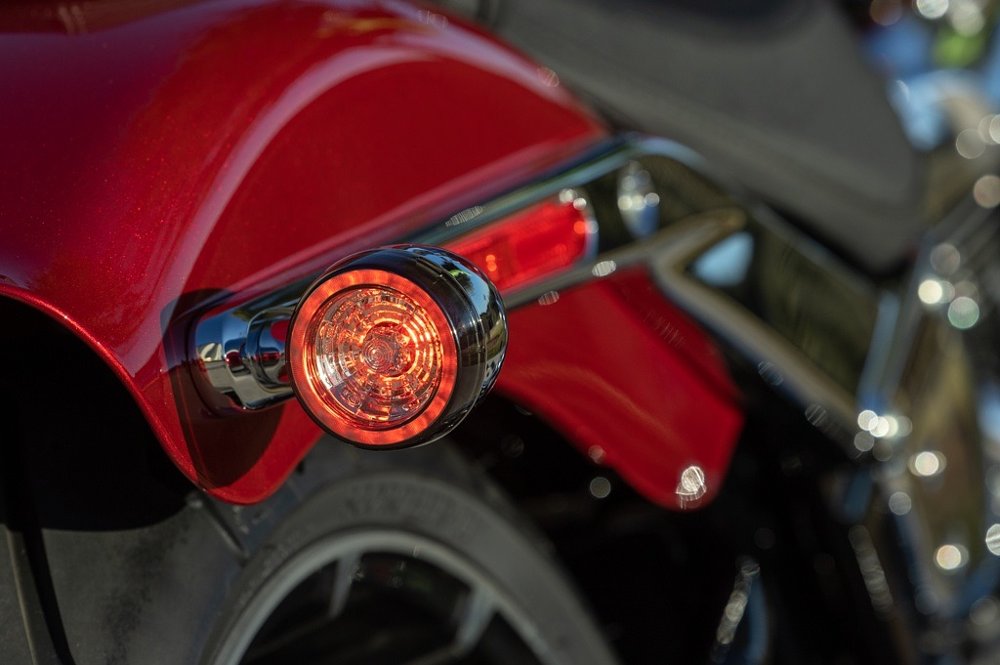
Ride modes: These behave differently on each bike. Road was peachy on everything I tried, and as other writers and I swapped bikes, the unwritten rule was that this was the mode you left 'em in. Sport was just fine on some machines and maybe a hair twitchy on others. If you're new to motorcycles that offer ride modes, despite what the marketing materials say, most people don't switch them around much. You find one you like and the bike stays there forever. Rain mode might be the exception, but personally, I find a consistent throttle to be safer than changing to one that tolerates ham-fisted inputs.
These were incorporated perfectly. You can switch modes on the fly. Roll off and back on, and the new mode is "accepted" and the icon blinks until it's locked in. The selections are also sticky. You don't have to roll to fun mode every time you shut the bike off and back on.
Transmission: On two of the Street Bobs, I missed some shifts. I think I needed to go over the linkages and make some adjustments, because most of the bikes had the familiar tractor clunk. That said, my feelings on the six-speed have not changed: sixth gear is not necessary until 80 mph. Especially if you're considering one of the models with a peakier engine tune, lugging is likely and the bike will be mad at you. Make friends with fifth; you'll be there a lot.
Seat height: Harley has always been committed to low seat heights, which is sometimes OK, but with mid controls, I felt squinched. I wouldn't mind it if they had a bike or two with mids and rear fender struts that sat up higher, a longer shock and/or a dropped-axle swingarm to get ground clearance and room to put footpegs closer to underneath the rider, rather than in front. Especially on the S or ST, let's be honest: An experienced rider is going after those bikes. A low seat height isn't being demanded.
Bikes with boards or forwards felt dandy — assuming you like that riding position. I don't, but that's just a matter of taste.
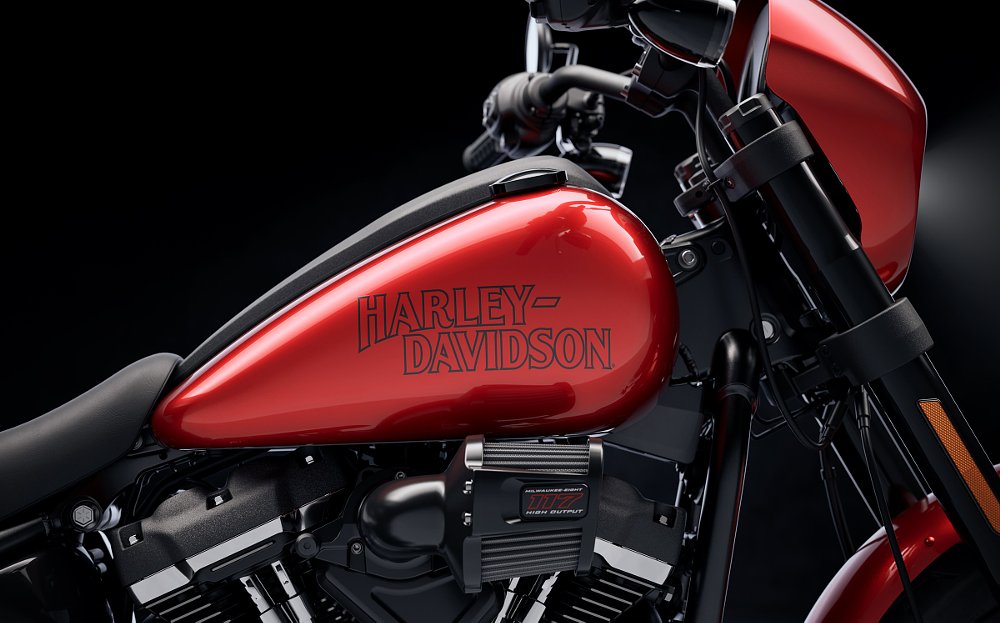
Fit and finish: characteristically excellent. Paint is gorgeous and well applied. Finishes are cohesive and applied beautifully. Wiring, plumbing, and less-than-beautiful exhaust plumbing is hidden well. A not-insignificant chunk of the money you pay for one of these goes to making sure keen, obsessive designers are on staff to send bikes out the door that are show-stopping visually.
Paint and graphics are killer. There are thoughtful and classic additions to paint like pinstriping and scallops. I did find two fit and finish flaws that I will not wave away. The first was a wrinkle black that was lifting off a Street Bob handlebar in a few spots. I suspect, like most stock H-D bars, that this is made of stainless, so this is a visual issue only, but it was a little surprising. This is what I think I remember H-D referring to as a Class A surface, meaning within the rider's view when operating the bike. These are normally the most scrutinized areas of the bike, so it was fairly odd to see, doubly so on a press bike.
The next was also bar-related: a Breakout exhibited a pretty visible gap in the necked section where the bar diameter is reduced to accommodate the control clamshells. The weld in the area was visible and the heat signature was not polished out.
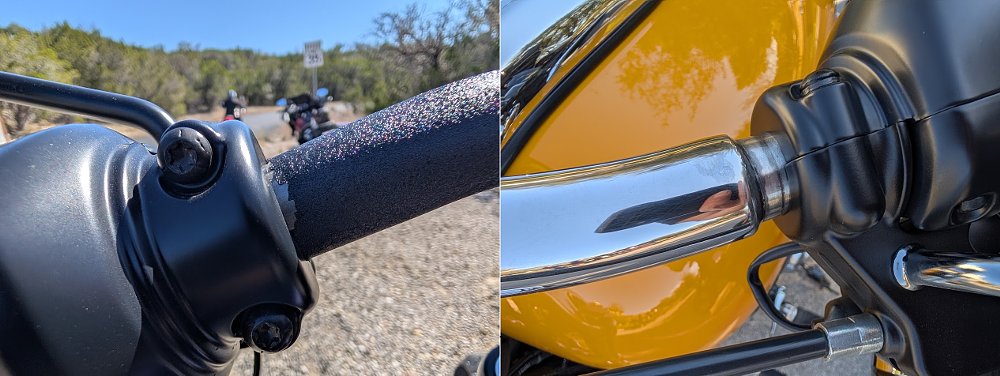
These are particularly venial sins. Both could be fixed with a new handlebar, which half of you will buy anywho. The Breakout could be polished in situ, and the Street Bob could be stripped or recoated.
Wheel(s): One of the Street Bobs I rode was equipped with laced wheels. I've pored over the parts fiche, so I think these wheels are new parts; they are definitely an option and not standard. Why am I mentioning them? They're edge-spoked! IMO, this is huge — the look of spokes with the easy maintenance of tubeless tires.
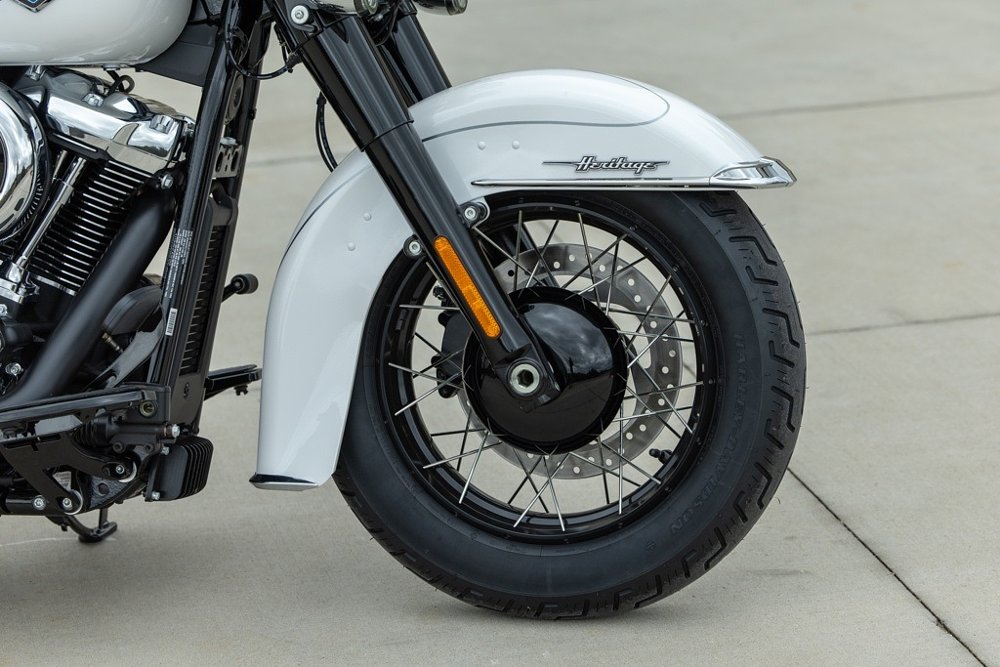
Bags: Low Rider STs have a two-into-one exhaust pipe now, allowing for an updated right-side bag, making the saddlebags mirror images of one another. I personally wouldn't give a rip either way, but I know for many observers, the asymmetry was a massive sticking point. That said, slight edge to the Heritage's bags over the ST's from a functionality standpoint. Top-loaders are a little easier to manage than clamshells.
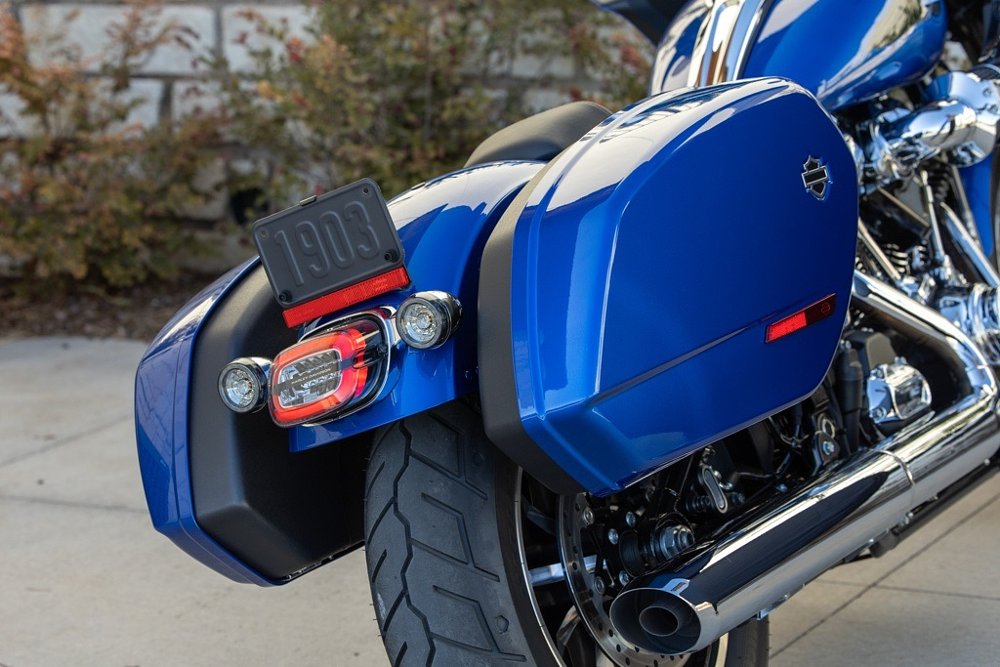
Verdict
Riding these was not worlds different than my initial experience with the first Milwaukee-Eight-powered mo'sickles. However, that sounds like damning with faint praise. We're talking about hundred-horsepower bikes with a full suite of electronic rider aids, ride modes, the best fit and finish in the motorcycle industry, from dealers that are part of a network that is unbeatable in the United States and, by all accounts, damn good elsewhere in the world.
And what errors have I found? Footpeg positions that don't suit me personally? Small flaws in the finish on handlebars? This is picking the proverbial fly shit outta pepper. I walked away from these bikes happy that Harley is making bikes of this quality. They're exceptionally fine and exceptionally fine-looking.
While not inexpensive, the motorcycles do not offer a poor value relative to competing products. They (finally!) are different enough from 10-year-old models that buying used, to me, isn't really a fair comparison.
If these bikes make you happy to look at, go test ride a few, and see if you want to take one home. I can't come up with a single, solid reason I'd recommend someone not buy one of these things if the mood strikes, which is about the highest praise you'll see come out of the nib of my pen.
| 2025 Harley-Davidson Heritage Classic | 2025 Harley-Davidson Street Bob | |
|---|---|---|
| Price (MSRP) | $22,999 | $17,199 |
| Engine | 117 ci (1,923 cc), air-and-oil-cooled, eight-valve V-twin Milwaukee-Eight 117 Classic | |
|
Transmission, final drive |
Six-speed, belt | |
| Claimed horsepower | 98 @ 4,600 rpm | |
| Claimed torque | 120 foot-pounds @ 2,500 rpm | |
| Frame | type | |
| Front suspension | 49 mm dual-bending valve fork | 49 mm dual-bending valve fork |
| Rear suspension | Monoshock adjustable for preload; 2,2 inches of travel | Monoshock adjustable for preload; 1.7 inches of travel |
| Front brake | Single four-piston caliper with ABS | |
| Rear brake | Two-piston caliper with ABS | |
| Rake, trail | 30 degrees, 5.5 inches | 30 degrees, 6.2 inches |
| Wheelbase | 64.2 inches | 64.2 inches |
| Seat height | 26.3 inches (laden) | 25.8 inches (laden) |
| Fuel capacity | 5.0 gallons | 3.5 gallons |
| Tires | Dunlop Harley-Davidson Series, 130/90B16 front, 150/80B16 rear | Dunlop Harley-Davidson Series, 100/90B19 front, 150/80B16 rear |
| Claimed weight | 728 pounds | 646 pounds |
| Available | Now | |
| Warranty | 24 months | |
| More info | harley-davidson.com | harley-davidson.com |
| 2025 Harley-Davidson Fat Boy | 2025 Harley-Davidson Breakout | |
|---|---|---|
| Price (MSRP) | $22,599 | $23,099 |
| Engine | 117 ci (1,923 cc), air-and-oil-cooled, eight-valve V-twin Milwaukee-Eight 117 Custom | |
|
Transmission, final drive |
Six-speed, belt | |
| Claimed horsepower | 104 @ 4,800 rpm | |
| Claimed torque | 126 foot-pounds @ 3,000 rpm | |
| Frame | type | |
| Front suspension | 49 mm dual-bending valve fork | |
| Rear suspension | Monoshock adjustable for preload; 1,7 inches of travel | |
| Front brake | Single four-piston caliper with ABS | |
| Rear brake | Two-piston caliper with ABS | |
| Rake, trail | 30 degrees, 4.1 inches | 34 degrees, 5.7 inches |
| Wheelbase | 65 inches | 66.7 inches |
| Seat height | 25.9 inches (laden) | 25.6 inches (laden) |
| Fuel capacity | 5.0 gallons | 5.0 gallons |
| Tires | Michelin Scorcher 11, 160/60R18 front, 240/40B18 rear | Michelin Scorcher 11, 130/60B21 front, 240/40R18 rear |
| Claimed weight | 694 pounds | 681 pounds |
| Available | Now | |
| Warranty | 24 months | |
| More info | harley-davidson.com | harley-davidson.com |
| 2025 Harley-Davidson Low Rider S | 2025 Harley-Davidson Low Rider ST | |
|---|---|---|
| Price (MSRP) | $20,499 | $24,199 |
| Engine | 117 ci (1,923 cc), air-and-oil-cooled, eight-valve V-twin Milwaukee-Eight 117 High Output | |
|
Transmission, final drive |
Six-speed, belt | |
| Claimed horsepower | 114 @ 5,000 rpm | |
| Claimed torque | 128 foot-pounds @ 4,000 rpm | |
| Frame | type | |
| Front suspension | 43 mm inverted fork | |
| Rear suspension | Monoshock adjustable for preload; 2.2 inches of travel | |
| Front brake | Single four-piston caliper with ABS | |
| Rear brake | Two-piston caliper with ABS | |
| Rake, trail | 28 degrees, 5.7 inches | |
| Wheelbase | 63.6 inches | |
| Seat height | 27 inches (laden) | |
| Fuel capacity | 5.0 gallons | |
| Tires | Michelin Scorcher 31, 110/90B19 front, 180/70B16 rear | |
| Claimed weight | 670 pounds | 712 pounds |
| Available | Now | |
| Warranty | 24 months | |
| More info | harley-davidson.com | harley-davidson.com |




